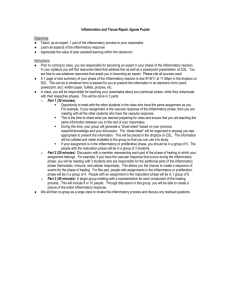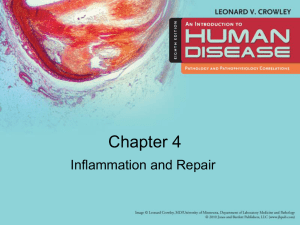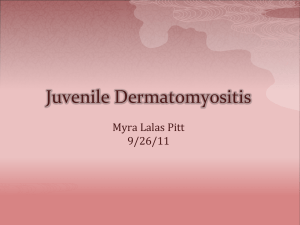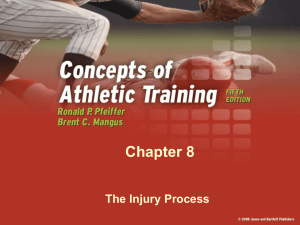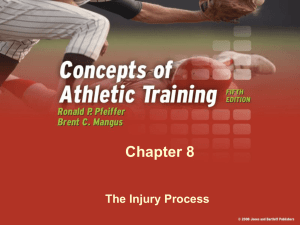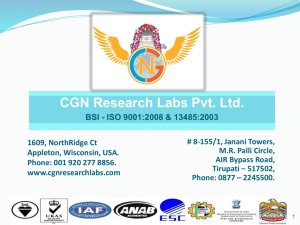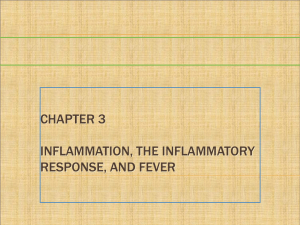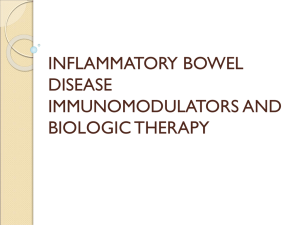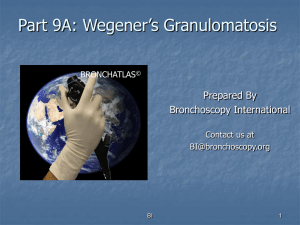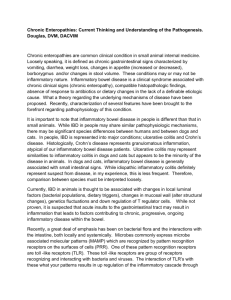Coated Circuit Research and Inflammation: The Literature
advertisement
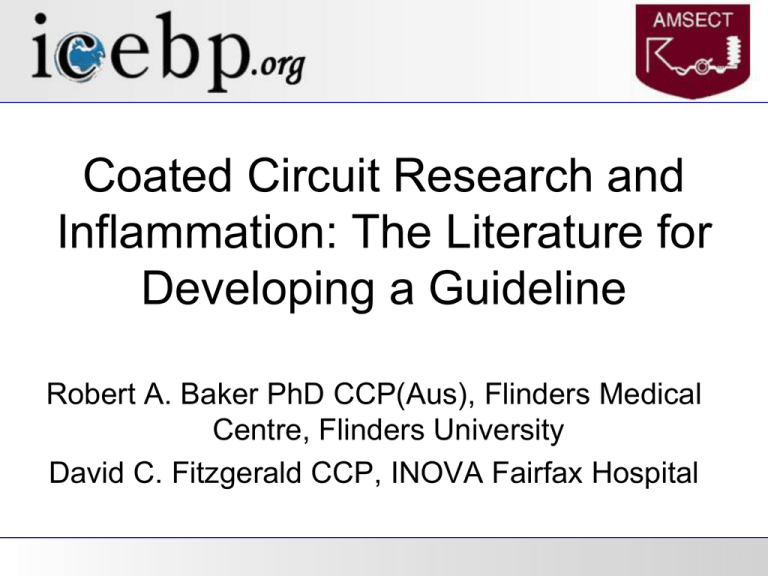
Coated Circuit Research and Inflammation: The Literature for Developing a Guideline Robert A. Baker PhD CCP(Aus), Flinders Medical Centre, Flinders University David C. Fitzgerald CCP, INOVA Fairfax Hospital Guidelines “Systematically developed statements to assist practitioner and patient decisions about appropriate health care for specific clinical circumstances” Institute of Medicine 1990 Guidelines not new! • Medical organizations have been developing for over 50 years • “Appropriate care recommendations date back to ancient times” • Now emphasis on systematic, evidence based guidelines • Interest in process, effective use and evaluation of guidelines James Lind, M.D. • 1600-1800: 1 million sailors die of Scurvy • 1747- Commissioned by Royal Navy to investigate Scurvy among sailors • 1751 published clinical findings • 1800- widespread adoption of citrus Mosteller F. “Innovation and Evaluation.” Science, 1981, 211, 881-886 Purposes or Value of guidelines (1) Assisting clinical decision making by patients and practitioners (2) Reducing practice variation (3) Educating individuals or groups. (4) Assessing and assuring the quality of care. (5) Guiding allocation of resources for health care. IOM 1992 (modified) IN GOD WE TRUST Everyone else bring evidence? Evidence-Based Medicine • The conscientious, explicit and judicious use of current best evidence in making decisions about the care of individual patients. The practice of evidence-based medicine means integrating individual clinical expertise with the best available clinical evidence from systematic research. • Evidence-based medicine is not “cook-book” medicine. External clinical evidence can inform, but never replace individual clinical expertise. (British Medical Journal 1996;312:71-2) ICEBP Inflammatory Response Guidelines Goals: • To enhance the clinicians’ understanding of the influence of CPB on inflammatory response. • To produce meaningful and actionable evidencebased guidelines for the specific attenuation of the inflammatory response generated during adult cardio-pulmonary bypass. Consensus Statement: Defining Minimal Criteria for Reporting the Systemic Inflammatory Response to Cardiopulmonary Bypass R. Clive Landis, Joseph E. Arrowsmith, Robert A. Baker, Filip de Somer, Wojciech B. Dobkowski, Gregory Fisher, Richard A. Jonas, Donald S. Likosky, John M. Murkin, Michael Poullis, David A. Stump, Edward D. Verrier Heart Surgery Forum 11(5), 2008. doi:10.1532/HSF98 Inflammatory Response and CPB • • • • • • • Pharmacology Emboli Temperature Cell Salvage Coated Circuitry Filtration Pumps Research Question • Do coated circuits reduce the inflammatory response during adult CPB as determined by an influence of at least (1) major causal marker? Criteria for Consideration • Peer reviewed literature – English language (1970-2010) • Adult procedures using CPB • At least (1) major causal inflammatory mediator measured • Structured literature searches • ≥ 2 abstract reviewers – 1 Yes included • ≥ 2 paper reviewers • All literature evaluated through the Guideliner web portal. EBM - Guideliner • Developed by the Cardiac Surgery Research and Perfusion GroupFlinders Medical Centre/Flinders University Problems with Circuit Coating RCT evaluation • Heterogeneity in circuit “biocompatibility” definition • Controlling for concomitant therapies • Study design- e.g., sample size, blinding • Differences in measurements of inflammatory mediators Thrombosis Research (2006) 117,689-703 Heterogeneity in Metanalyses Did not control for: “Heparinization of the blood contact surface in 1.cardiopulmonary Systemic Heparinization (280s vs 480s) bypass has been promoted as an 2. Pump vs cell salvage important stepsuction in the development of open-heart surgery, 3. as Open it decreases the inflammatory vs closed system response resulting from the extracorporeal circulation” European Journal of Cardio-thoracic Surgery 21 (2007) 1058-1069 Heterogeneity in Metanalyses JECT. 1999(31);3:135-141 RCT Post-Hoc Analysis • Identify common inflammatory mediators from the literature • Focus on “core” markers • Analyze baseline and peak measurements • Establish consensus on measuring intervals and frequency • Conduct a meta-analysis 48 Reported Inflammatory Mediators • • • • • • • • C3a: classical complement pathway IL-6: immunoregulatory cytokine IL-8: proinflammatory chemokine TAT: thrombin formation, cross-over to inflammation TNF-alpha: inflammatory cytokine PMN elastase: neutrophil activation and destruction MPO: neutrophil activation and destruction IL-10: counterpoint to proinflammatory markers J Card Surg 2008;23:288-293 “Sorry guys, this paper was long ago. I wouldn't even know where to start” Complement C3a assays • Utilized in 25 of the RCT that met criteria – Most widely used inflammatory marker – Frequency of testing range • Range (2-7) • Median= 5 – Variances in observed peak intervals • Start of CPB – 24 hours post-op • Was there a peak observed? Definition: Peak • • • • The most extreme possible amount or value The highest level or degree attainable The top or point of something The highest point (of something) Webster’s Online Dictionary www.websters-online-dictionary.org Ann Thorac Surg 1993;55:917-22 Size of the studies • Stammers et al 1999 – 26 published studies • 1515 patients (ave 58 per study) • Mangoush et al 2007 – 41 published studies • 1515 patients (ave 87 per study) • Rannucci et al 2007 – 36 published studies • 4360 patients (ave 121 per study) Size of the studies • Stammers et al 1999 – 26 published studies • 1515 patients (ave 58 per study) • End bypass C3a 80 patients • End bypass TAT complex 155 • ICEBP in progress – Data from 12 published studies • C3a 10 studies, 577 patients • TAT complex 3 studies, 346 patients • Trial arm sizes run 7-101! Guidelines “Systematically developed statements to assist practitioner and patient decisions about appropriate health care for specific clinical circumstances” Institute of Medicine 1990 What we’ve learned • Coated circuits appears beneficial in reducing inflammatory response. Marker data seems consistent in one direction. • Data is very heterogeneous in nature, further investigation is warranted. • Need clearer consensus on study design with respect to inflammatory markers. What we’ve learned • Identifying opportunities for improvement will help improve future published research. • Anecdotal decline in contemporary coated circuit research – Efficacy of uncoated tubing • This is a marathon, not a sprint…..Enjoy the ride! • • • • • Rob Baker Kenny Shann Tim Dickinson Donny Likosky Randy Bullock • • • • Jane Ottens Heinz Weitkemper John St. Onge Zack Beckman Thank you

